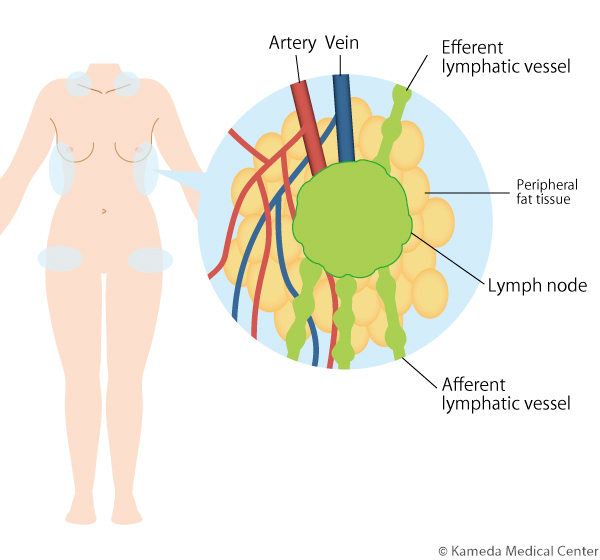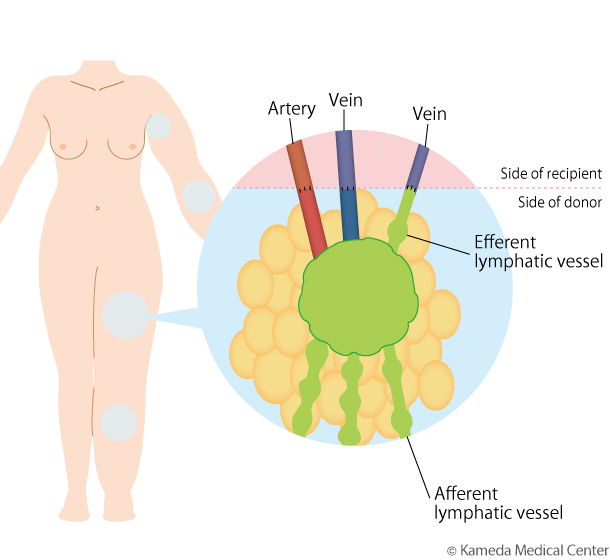8.Surgery for lymphedema: What is lymph node transfer?
In treatment for lymphedema, for the cases with advanced degeneration of lymphatic vessels and exacerbated lymphedema, the combination with conservative therapy and surgical treatment has been shown to alleviate symptoms of lymphedema, slow the speed of exacerbation, and reduce cellulitis (infection).
The previous column explained "lymphaticovenular anastomosis (LVA)" that is the most minimally invasive technique among surgeries (see the seventh column). While the cases in which there are many lymphatic vessels with moderate or lower degeneration and lower stenosis as shown in the left side of below figure have a high effect of surgery, the cases in which there are many lymphatic vessels with advanced degeneration and stenosis/obstruction as shown in the right side of below figure have a lower or little effect of surgery.

For such cases of lymphedema with advanced degeneration of lymphatic vessels, "lymph node transfer (LND)" is one of treatment options.
First, this surgery obtains lymph nodes at normal sites (such as the site around the collarbone, the lateral thoracic site, the groin) and fatty tissue around the site as well as blood vessels that nourish them.

Next, obtained lymph nodes and the surrounding tissue (the donor side) are transferred to the site of lymphedema with severe degeneration of lymphatic vessels (the recipient side). Blood vessels that nourish the lymph nodes (artery/vein) are microscopically anastomosed with the blood vessels of the graft bed. Also, if efferent lymphatic vessels of transferred lymph nodes can be identified, they are anastomosed with the veins of the recipient side.

The mechanism in which LNT has an effect on lymphedema is as follows:
- Lymph nodes have pumping action to recover and flow lymph fluid, and there is physiological "lymphatic vessel-vein inosculation" in the lymph nodes. Through these functions, accumulated lymph fluid is eliminated.
- Because lymphangiogenesis factors are released from the transferred lymph nodes, new lymph flow is formed, leading to improvement of accumulation of lymph fluid.
Like LVA, while decreased circumference, decreased onset of cellulitis, and improved symptoms (heaviness, numbness, pain) are expected after surgery, this technique is more invasive and requires longer time to get an effect (a half year to one year or longer) than LVAs. Also, this technique is difficult to decrease fat that has already increased with exacerbated lymphedema. "Liposuction" is needed to remove increased fat.